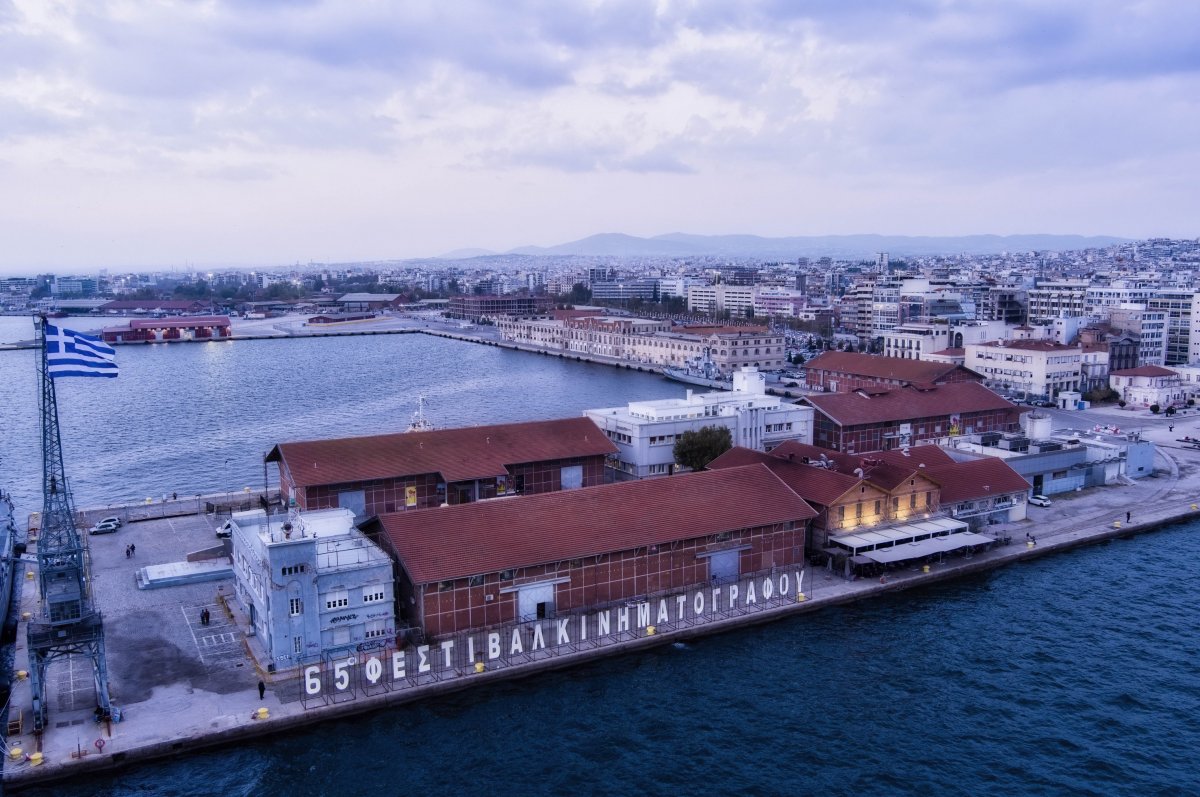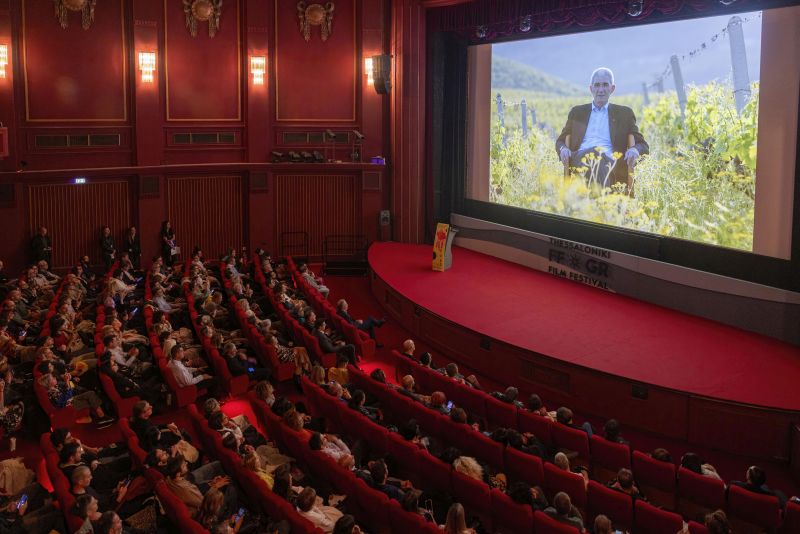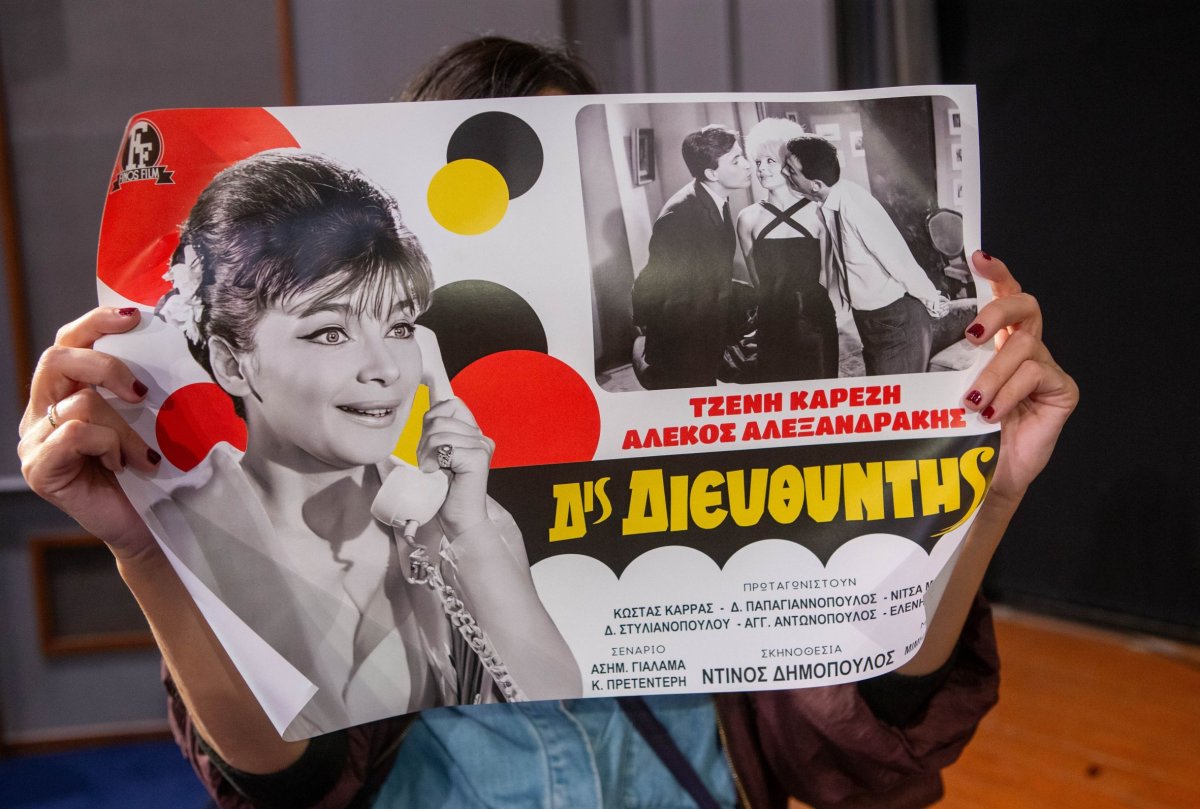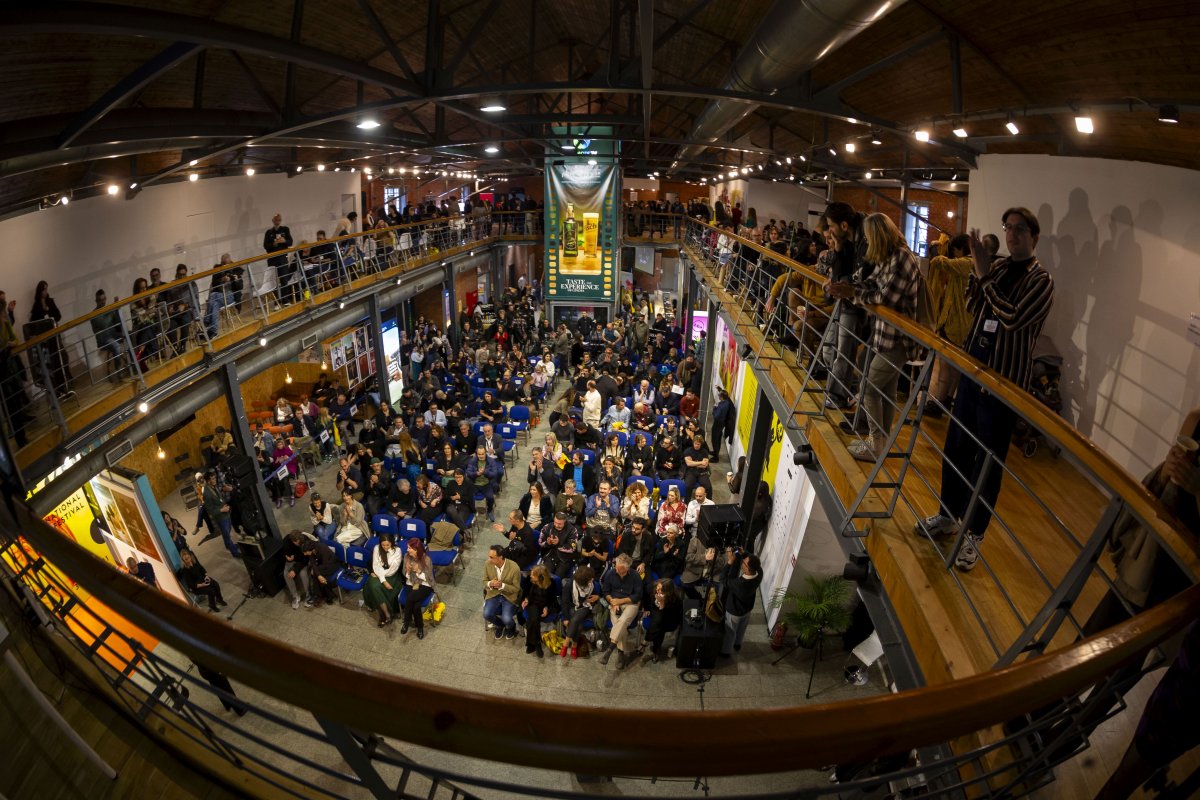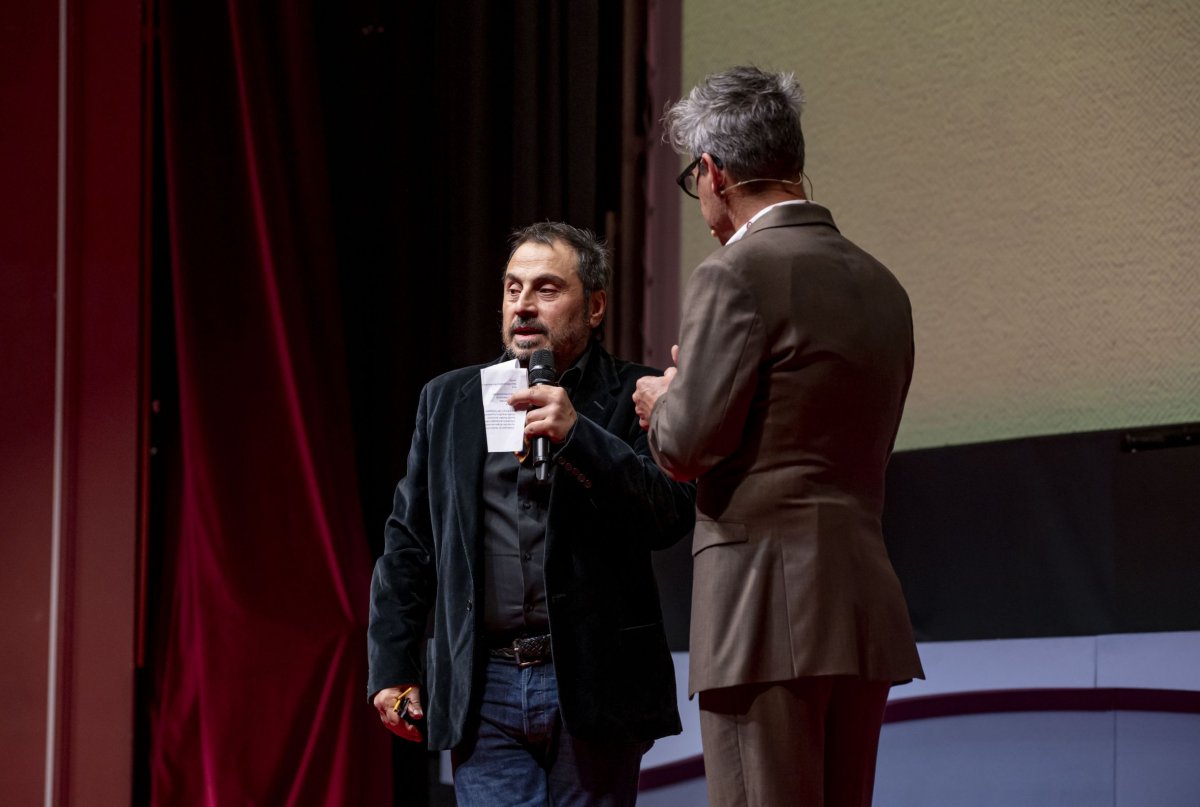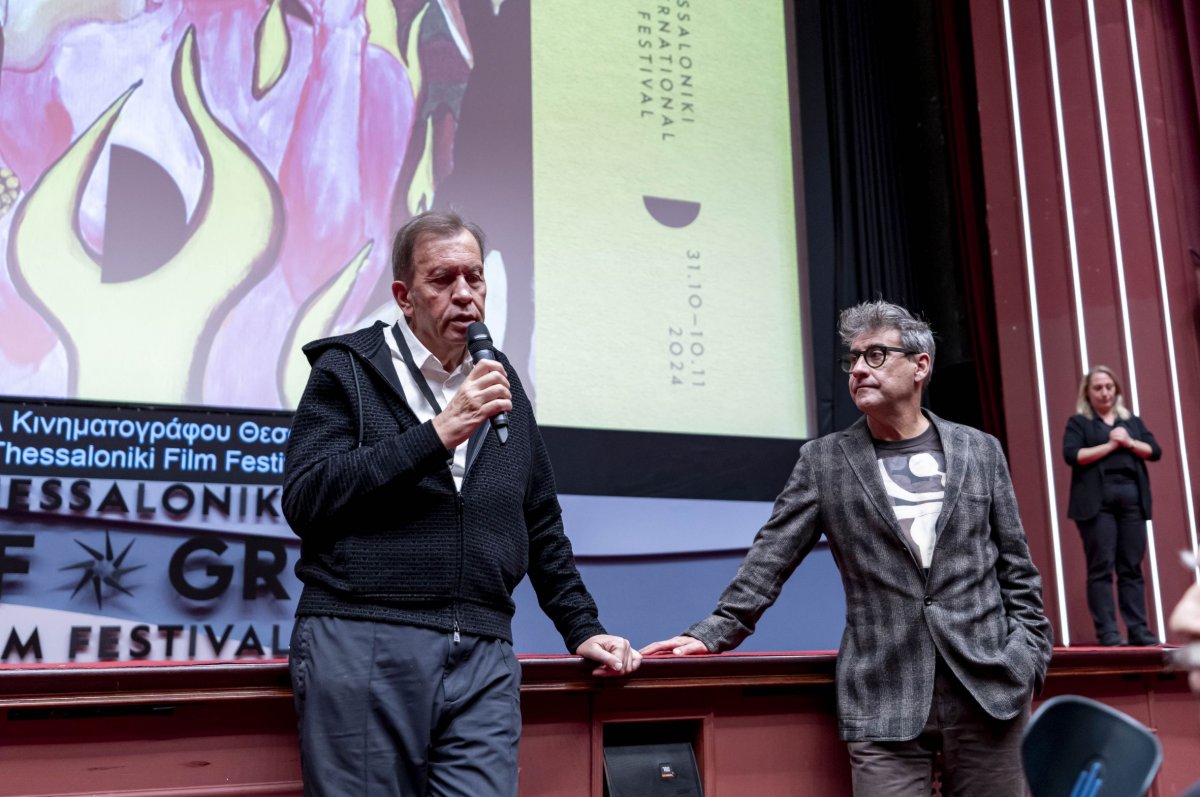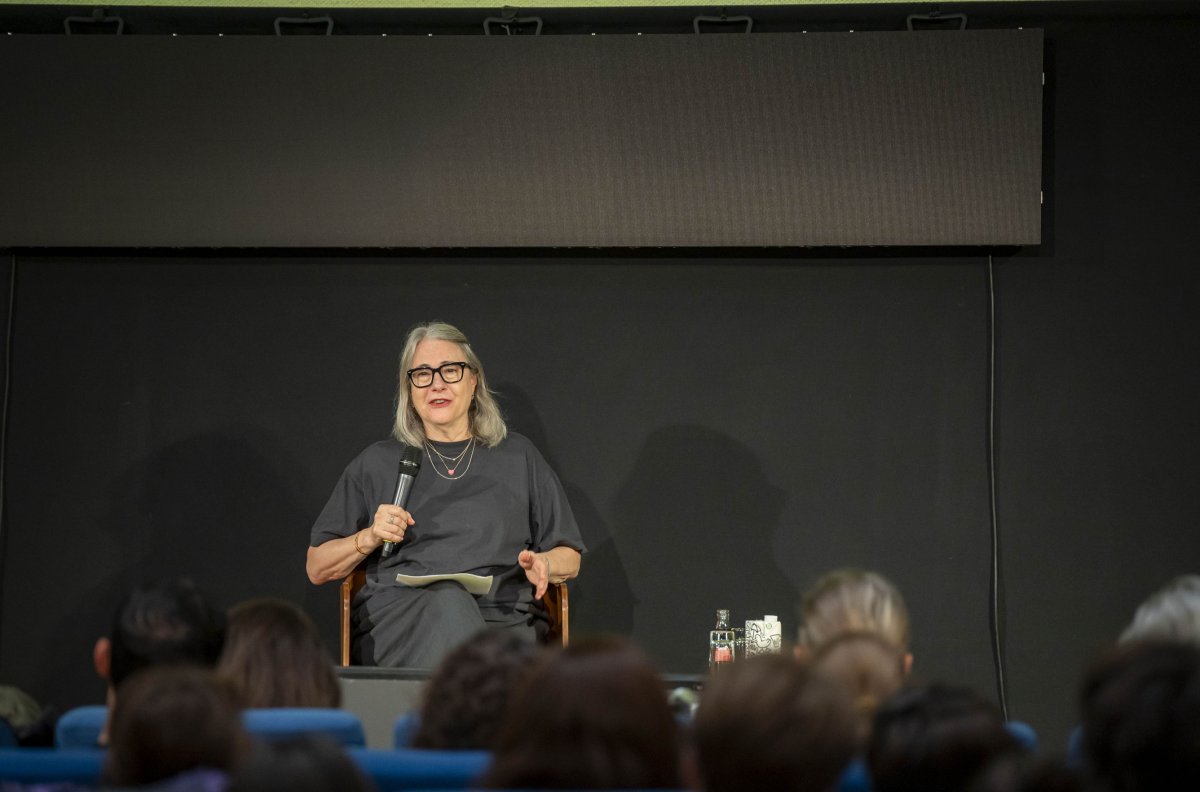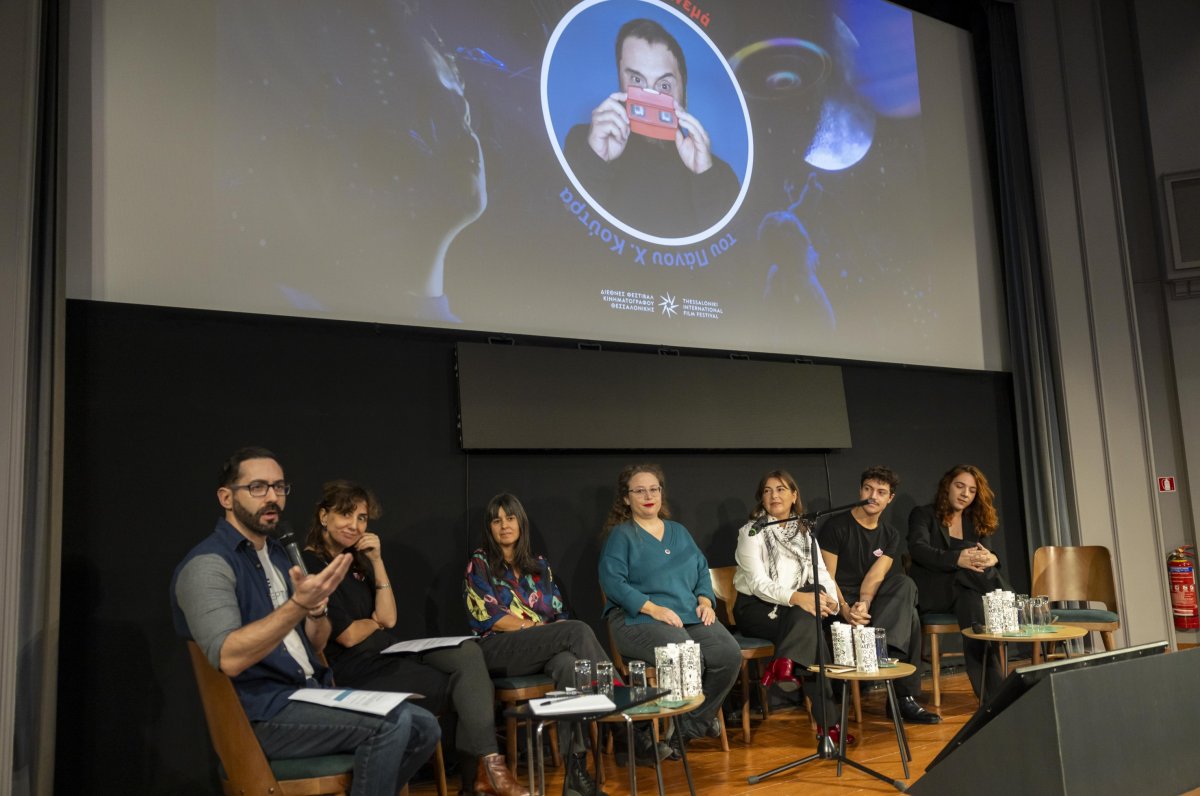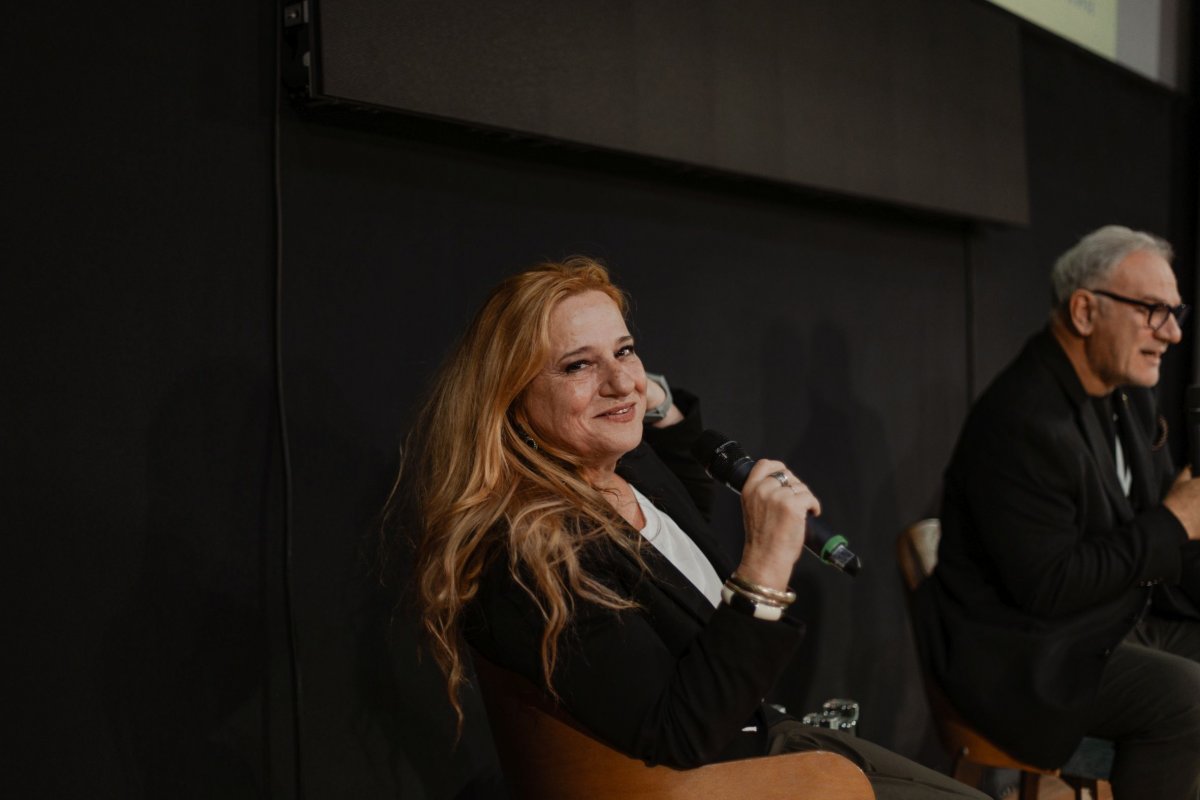62nd THESSALONIKI INTERNATIONAL FILM FESTIVAL
4-14/11/2021
Seminar with Anne Østerud and Janus Billeskov Jansen:
The secrets of editing of the film Another Round
Experienced editors Anne Østerud and Janus Billeskov Jansen delivered a seminar on editing of the film Another Round, as part of the "In the Cut: The Editing and its Secrets" tribute, hosted by the 62nd TIFF, at the packed Pavlos Zannas theatre, on Saturday November 13. The Danish duo of editors invited the audience to the innermost of the editing process of this film, decoding step by step the path they followed, through the projection of scenes and videos. In the end, they surprised the viewers by showing an alternative last scene of the beloved film that never found its way to the big screen.
Apostolos Karakasis, professor at the Film School of the Aristotle University of Thessaloniki, took the floor for a brief introduction. "During the past five days at the Festival, top-notch editors and artists have been revealing to us the secrets of their art. Already, through the first video, we have been transferred to Copenhagen, to the editing room of the film Another Round, to the place where two very dedicated and special artists of editing elaborated some of the most famous films from Denmark and Scandinavia, such as Pelle, the Conqueror, House of the Spirits, A Fortunate Man, The Girl with the Dragon Tattoo and of course, the creations of the director Thomas Vinterberg".
The seminar kicked off with a few words from Anne Østerud about the collaboration of the two speakers, as well as of what binds them in their long careers. "Our collaboration began 15 years ago and it is very special for us working as a duo, for editors usually work on their own," she said, before Janus Billeskov Jansen took the floor: "It is an honour for me to work with Anne. We have a common rhythm, a common heart, a similar way of reading movies, all the magical moments that cinema hides inside it," he explained.
The two speakers then referred to the film Another Round, commenting that they spoke with Thomas Vinterberg for the first time in 2017. "Thomas wanted to make a film dedicated to alcohol and the pleasure of life, and then I mentioned to him a theory from a Norwegian psychiatrist that I had read, according to which people are born with 0.05% alcohol deficiency in their blood. It was a wonderful idea to combine Thomas' mood and the information I gave him," Mrs. Østerud explained, and continued by saying: "Initially, he wanted to return to Dogme '95, after two consecutive international films. He felt like going back to a more playful way of directing, longing to find his voice and his own unique viewpoint. We ended up keeping some of the rules, not all of them, such as the hand-held camera or the display of text messages on the screen during the film".
Janus Billeskov Jansen then analyzed the great challenges they faced in the editing of the film. "Initially, we had to introduce the protagonist in the right way, find out how to complete the theme of alcohol consumption in the film and how to build the right atmosphere for the last scene. More specifically, to find the way in which the protagonists would start drinking again, after all they had been through," he said. Mrs. Østerud added that "the dance scene at the end was very badly received by the people who saw it at the beginning; because they could not accept that the characters reacted like this after the tragic event".
In fact, things did not go so well during the filming and editing, as Mr. Jansen revealed through a funny incident. "We invited some people to see a first version of the film, because at that moment the material we had in our hands was 4,5 hours long, to share with us their impressions and see their reactions. We needed to know if the story we wanted to tell would be communicated to the audience in our way. Needless to say, we were shocked after the screening! It was a disaster; for many people of the audience believed that the main character had been an alcoholic from the beginning of the film. So we realized we didn't do a good job, as we had to change the beginning of the film," he revealed, while the audience burst into laughter. The two editors then showed this particular scene, before and after the interventions, explaining that the changes they made to avoid giving the impression that the protagonist was an alcoholic from the very start are a very good example of how a simple shuffling of the scenes in editing can change the whole meaning of the film.
Janus Billeskov Jansen explained that they were confronted also with moral dilemmas during filming and editing, especially in a specific scene that they showed to the audience, as the two editors wanted to avoid portraying alcoholism as a pleasant habit without consequences. "The big problem in the film was how to stop the experiment with the alcohol consumption, for in the beginning it gives the impression as if it happened by mistake and not consciously. We decided, therefore, to change the big scene where they all get drunk, to capture the course of the protagonists in a very dark spot", he pointed out, showing the same scene before and after the changes, while explaining the impact of each moment on the form of the story.
After analyzing the editing in key scenes of the film, questions, posed by the audience, followed. In the end, the two editors made a surprise to the attendees, revealing for the first time a different finale from the one we all saw in the movie theaters. The seminar concluded with the two guests urging young editors not to be afraid of cooperation, to let other people see their work and to collect observations and reactions in order to become better in every instance.



